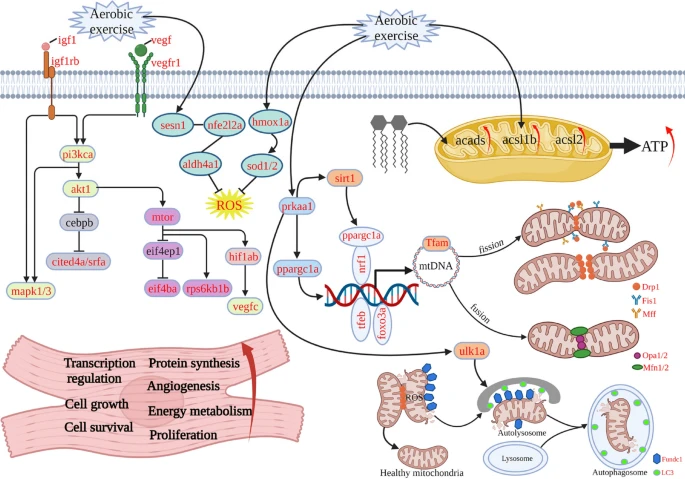Fig. 6 Molecular mechanism of post-exercise regulation of cardiac hypertrophy in zebrafish. (1) Due to the requirement of a large amount of energy supply under training conditions, the mitochondria need to keep homeostasis between energy production and consumption. (2) Mitochondrial function enhancement: aerobic exercise also activated prkaa1-pargc1a signaling, which enhanced mitochondrial biogenesis, division, fusion, and autophagy processes, thus improving mitochondrial function. (3) Elevated cardiac energy metabolic function: a large amount of energy is consumed during aerobic exercise. acads, acsl1b, and acsl2 lipolytic metabolizing enzymes are also activated for expression; (4) improve antioxidant capacity: as exercise generates ROS, excessive ROS can cause damage to organelles and DNA. At the same time, antioxidant genes such as HO1-SOD and SESN1 are activated to scavenge ROS (Created with BioRender.com)
Image
Figure Caption
Acknowledgments
This image is the copyrighted work of the attributed author or publisher, and
ZFIN has permission only to display this image to its users.
Additional permissions should be obtained from the applicable author or publisher of the image.
Full text @ J Physiol Sci

